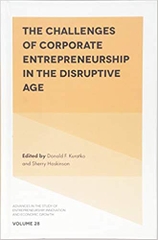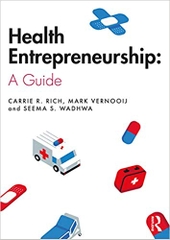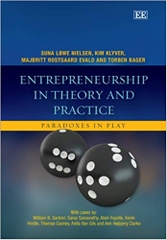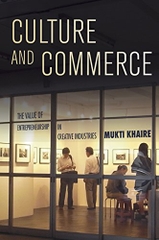-
-
-
Tổng tiền thanh toán:
-
-
Thông tin
-
Tìm sách theo yêu cầu
Every day, individuals take action based on how they believe innovation will change industries. Yet these beliefs are largely based on guesswork and incomplete data and lead to costly errors in judgment. Now, internationally renowned innovation expert Clayton M. Christensen and his research partners Scott D. Anthony and Erik A. Roth present a groundbreaking framework for predicting outcomes in the evolution of any industry. Based on proven theories outlined in Christensen's landmark books The Innovator's Dilemma and The Innovator's Solution, Seeing What's Next offers a practical, three-part model that helps decision-makers spot the signals of industry change, determine the outcome of competitive battles, and assess whether a firm's actions will ensure or threaten future success. Through in-depth case studies of industries from aviation to health care, the authors illustrate the predictive power of innovation theory in action.
- Link: http://www.amazon.com/Seeing-Whats-Next-Theories-Innovation/dp/1591391857
Product Details
- Hardcover: 352 pages
- Publisher: Harvard Business Review Press; 1st edition (September 21, 2004)
- Language: English
- ISBN-10: 1591391857
- ISBN-13: 978-1591391852
- Product Dimensions: 9.6 x 6.4 x 1.2 inches
- Shipping Weight: 1.6 pounds (View shipping rates and policies)
- Average Customer Review: 4.4 out of 5 stars See all reviews (33 customer reviews)
- Amazon Best Sellers Rank: #153,205 in Books (See Top 100 in Books)
Editorial Reviews
Review
"Just as kids await the latest Harry Potter installment, so do business leaders look for Clayton M. Christensen’s next offering." -- Inc. Magazine, September 2004
About the Author
Christensen is one of the brightest stars in business right now, and is recognized as one of the world's leading experts on innovation. He is the Robert and Jane Cizik Professor of Business Administration at Harvard Business School, with a joint appointment in Technology & Operations Management and General Management Scott D. Anthony is a Partner at Innosight LLC and Erik A. Roth is a consultant in McKinsey & Company's Boston office.
Most Helpful Customer Reviews
134 of 137 people found the following review helpfulBy Donald Mitchell HALL OF FAMETOP 500 REVIEWERVINE VOICE on November 4, 2004
Format: Hardcover
Seldom do I remember a book that totally replaces the old and popular business literature quite as effectively as Seeing What's Next does in superceding The Innovator's Dilemma and The Innovator's Solution. If you have not read either of those books, you can skip them now and read Seeing What's Next instead. If you have already read those books, you will be delighted to see how much more practical the advice is in Seeing What's Next than in the earlier two efforts.
Before going into the details of what the book covers, I want to especially compliment Professor Christensen for overcoming in Seeing What's Next two of the three most serious weaknesses of The Innovator's Solution -- the lack of discussing business model innovation and the omission of leading technology business model innovation examples.
In Seeing What's Next, the authors take on the challenge of helping executives and managers consider the likelihood of disruptive technology changes occurring and how they should evaluate their potential responses in light of current information. The analysis looks at both the perspective of the companies that will be disrupted and displaced as well as those who are leading the disruptions.
The book is a remarkable combination of theory, process suggestions and detailed case histories to explain the suggested process. As a result, this book will be the most practical guide available for technology executives until Professor Christensen brings out the next installment of his thinking in a future book.
In Part I, the authors use existing theories about disruptive innovations to suggest which signals to pay attention to as suggesting that opportunities exist, how to determine if competitors will be a factor in disruption, choosing an appropriate response and considering how government and other nonmarket influences can affect the result.
In Part II, the process of applying the Part I theories are exemplified in higher education, commercial aviation, semiconductor customer benefits, health care productivity, non-U.S.-based innovations and strategies, and the telecommunications industry.
The book also contains a stimulating conclusion and helpful summary of key concepts in the appendix.
As usual, Professor Christensen and his colleagues have provided many interesting and valuable footnotes. I usually found them to be as interesting as or more interesting than the text.
Having said so many nice things, you are probably wondering what the book's weaknesses are. I found a few that are worth considering before you start reading the book . . . which everyone should do.
1. The proposed analysis of signals and competitors is extremely elementary. It reminded me of the state-of-the-art in strategic thinking in 1971 when I first started as a strategy consultant at The Boston Consulting Group. Today, much better sources of information and means of analysis are available. I was surprised to see such primitive suggestions to such important questions.
2. In the competitive analysis, the book assumes rational competitors who understand where they are. In my experience, innovative situations have everyone confused and they mill about aimlessly . . . often acting against their own rational best interest.
3. The authors take the rationalist view that the future can be predicted well enough in one direction that you can plan and act based on that. Most experienced business people would not agree with that assessment. The opposing view is that you should develop scenarios of what might happen along a number of different extreme lines, and then look for directions that leave you better off regardless of which scenario occurs.
4. While the authors do a wonderful job of describing many disruptive innovations, they do a relatively poor job of discussing how to develop, nurture and accelerate the impact of such innovations. Hopefully, the next book will be much more of a "how to" effort in this direction.
5. Finally, while business model innovations are described in abundance, there's little connection in the book to a process for pursuing business model innovation along with technical innovation. As a result, the table is set . . . but no meal is served in this area.
How good is this book? Many people tell me that Good to Great is the most helpful business book they have ever read. I found Seeing What's Next to be a vastly better and more useful book. Try it.
Before going into the details of what the book covers, I want to especially compliment Professor Christensen for overcoming in Seeing What's Next two of the three most serious weaknesses of The Innovator's Solution -- the lack of discussing business model innovation and the omission of leading technology business model innovation examples.
In Seeing What's Next, the authors take on the challenge of helping executives and managers consider the likelihood of disruptive technology changes occurring and how they should evaluate their potential responses in light of current information. The analysis looks at both the perspective of the companies that will be disrupted and displaced as well as those who are leading the disruptions.
The book is a remarkable combination of theory, process suggestions and detailed case histories to explain the suggested process. As a result, this book will be the most practical guide available for technology executives until Professor Christensen brings out the next installment of his thinking in a future book.
In Part I, the authors use existing theories about disruptive innovations to suggest which signals to pay attention to as suggesting that opportunities exist, how to determine if competitors will be a factor in disruption, choosing an appropriate response and considering how government and other nonmarket influences can affect the result.
In Part II, the process of applying the Part I theories are exemplified in higher education, commercial aviation, semiconductor customer benefits, health care productivity, non-U.S.-based innovations and strategies, and the telecommunications industry.
The book also contains a stimulating conclusion and helpful summary of key concepts in the appendix.
As usual, Professor Christensen and his colleagues have provided many interesting and valuable footnotes. I usually found them to be as interesting as or more interesting than the text.
Having said so many nice things, you are probably wondering what the book's weaknesses are. I found a few that are worth considering before you start reading the book . . . which everyone should do.
1. The proposed analysis of signals and competitors is extremely elementary. It reminded me of the state-of-the-art in strategic thinking in 1971 when I first started as a strategy consultant at The Boston Consulting Group. Today, much better sources of information and means of analysis are available. I was surprised to see such primitive suggestions to such important questions.
2. In the competitive analysis, the book assumes rational competitors who understand where they are. In my experience, innovative situations have everyone confused and they mill about aimlessly . . . often acting against their own rational best interest.
3. The authors take the rationalist view that the future can be predicted well enough in one direction that you can plan and act based on that. Most experienced business people would not agree with that assessment. The opposing view is that you should develop scenarios of what might happen along a number of different extreme lines, and then look for directions that leave you better off regardless of which scenario occurs.
4. While the authors do a wonderful job of describing many disruptive innovations, they do a relatively poor job of discussing how to develop, nurture and accelerate the impact of such innovations. Hopefully, the next book will be much more of a "how to" effort in this direction.
5. Finally, while business model innovations are described in abundance, there's little connection in the book to a process for pursuing business model innovation along with technical innovation. As a result, the table is set . . . but no meal is served in this area.
How good is this book? Many people tell me that Good to Great is the most helpful business book they have ever read. I found Seeing What's Next to be a vastly better and more useful book. Try it.
XEM THÊM TẠI AMAZON.COM
- Thông tin chi tiết
- Mục lục
- Đọc thử
- Đọc thử
- Đánh giá & bình luận của người mua
- Những cuốn sách cùng chủ đề hoặc có liên quan
Tại web chỉ có một phần nhỏ các đầu sách đang có nên nếu cần tìm sách gì các bạn có thể liên hệ trực tiếp với Thư viện qua Mail, Zalo, Fanpage nhé
Đăng ký nhận tin qua email
Hãy đăng ký ngay hôm nay để nhận được những tin tức cập nhật mới nhất về sản phẩm và các chương trình giảm giá, khuyến mại của chúng tôi.












